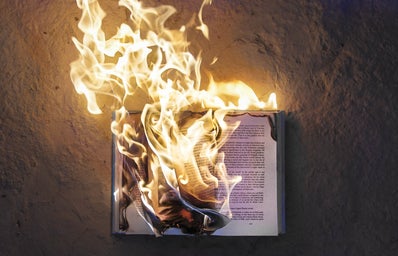Book banning is back. Rep Matt Krause of Texas recently put 850 books on a watch list, many of them dealing with race and LGBTQ issues. Then an Oklahoma state senator proposed a bill to ban books that address “sexual perversion” from school libraries. The school board of McMinn County, Tennessee, just banned “Maus,” Art Spiegelman’s Pulitzer-Prize-winning graphic memoir about the Holocaust. In at least 10 states, legislators have proposed bills that would force administrators to list every book, reading, and activity that teachers use in their lesson plans.
When did this start happening?
First, let’s look into the history of book censorship.
One of the earliest instances of banning books was the Roman Catholic Counter-Reformation in the 16th century which attempted to halt unauthorized reading, including inhibiting the ability of individuals to read for themselves. Individual access to written or printed texts was perceived as threatening, while oral reading to the masses by a priest or other leader could be controlled and censored. This enforced orthodoxy and countered both collective and individual autonomy. Many historians agree that Harriet Beecher Stowe’s “Uncle Tom’s Cabin” was the first book in the United States to experience a ban on a national scale. The Confederacy banned the book for its pro-abolitionist agenda, and because it aroused heated debates about slavery.
But why are some books banned today?
Often, concerned parents who desire to “protect” their children from the themes or content within books challenge their inclusion in school curriculum or libraries. Books can be banned for a multitude of reasons, ranging from themes of sexuality and race to challenging authority and the government. The top three reasons cited for challenging materials as reported to the Office of Intellectual Freedom were:
- The material was considered to be “sexually explicit.”
- The material contained “offensive language.”
- The material was “unsuited for a certain age group.”
State representatives claim these new bills are designed to prevent teachers from telling children what to think, encouraging them to see divisions or asking them to adopt perspectives that are different from those of their parents.
But librarians are fighting back. In Texas, four librarians started the #FReadomFighters to resist what they are calling the “war on books.” Banned Books Week is an annual week-long event during the last week of September. It highlights commonly banned titles and educates students about why some books are banned—and the harm that comes about when knowledge is withheld and narratives are controlled. High schools celebrate this week by displaying banned books in a special display in schools, holding discussions on banned books in English classes or reading banned books in class.
What can I do?
For one, READ! BANNED! BOOKS! It is so important to educate yourself and others on topics that government officials don’t want you to have access to. Book Riot has a comprehensive guide to fighting against book banning and censorship that I highly recommend reading.
Here’s a list of some of my favorite books that are commonly banned. Happy reading!
“To Kill a Mockingbird” by Harper Lee
Banned and challenged for racial slurs and their negative effects on students, featuring a “white savior” character and its perception of the Black experience.
“Slaughterhouse-Five” by Kurt Vonnegut
Challenged for sexual content, anti-religious content, profanity, anti-war depiction of World War II and acknowledging gay men as victims of the Holocaust.
“Speak” by Laurie Halse Anderson
Banned, challenged and restricted because it was thought to contain a political viewpoint, was claimed to be biased against male students and included rape and profanity.
“The Handmaid’s Tale” by Margaret Atwood
Banned and challenged for profanity, vulgar language and sexual overtones. Seen as detrimental to Christian values.
“The Perks of Being a Wallflower” by Stephen Chbosky
Banned for characters that were “bad role models”, drug use, smoking, underage sex, drinking and attempts to be sexual and arousing in its graphic descriptions; references to homosexuality, date rape, masturbation and the glorification of alcohol use and drugs.
“The Catcher in the Rye” by JD Salinger
Banned for excess vulgar language, sexual scenes, content concerning moral issues, excessive violence and dealing with the occult.


